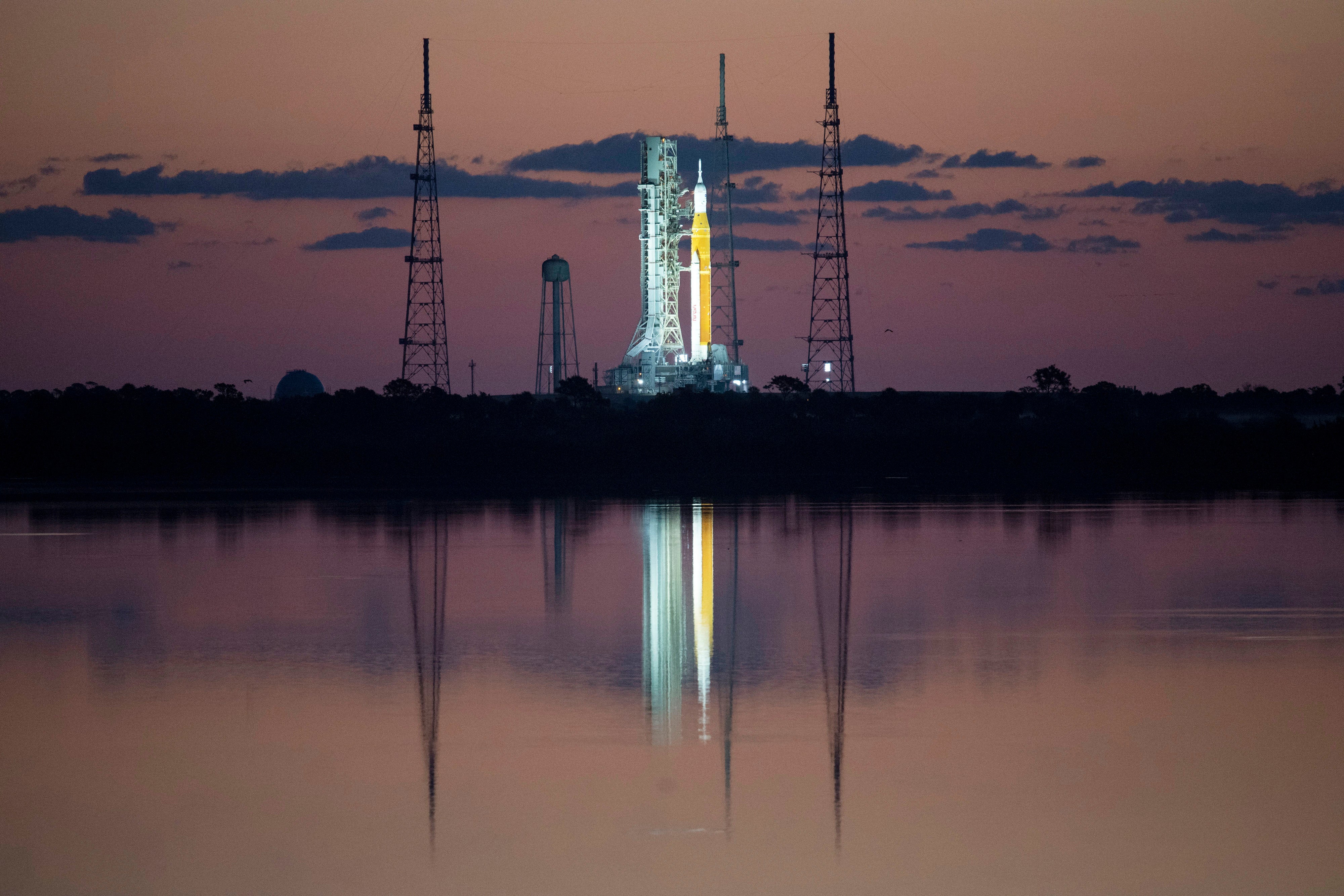Nasa resumes fuelling test of massive Moon rocket Monday
After technical problems caused a halt to testing on Sunday, Nasa resumed a fueling test of its massive Moon rocket on Monday morning

Nasa was proceeding with a crucial fuelling test of its massive Moon rocket on Monday after a technical problem led the space agency to pause the test on Sunday.
Nasa began its wet dress rehearsal for launch of the 322-ft-tall Space Launch System rocket and Orion spacecraft on Friday, a test involving pumping the rocket full of cryogenic hydrogen and liquid oxygen and a practice countdown for launch. But the test was paused on Sunday after two fans used to keep hazardous gasses from spreading around the launchpad failed.
Just before 8am Eastern time on Monday, however, the mission management team issued approval to continue the fuelling process and restart the test pending the delivery of a load of non-flammable nitrogen gas, which is loaded into the rocket ahead of any fuel to prevent any chance of combustion inside SLS during the fuelling process.
The fuelling and countdown test will take around six hours.
A live stream of the wet dress rehearsal is available on the Kennedy Space Center Youtube channel.
The SLS and Orion are the keystones of Nasa’s Artemis program, which aims to return humans to the Moon in 2025. Following a successful wet dress rehearsal, Nasa will roll the rocket and spacecraft from the launchpad at Cape Canaveral back into the Vehicle Assembly building for final checks before the first mission of the Artemis program, Artemis I, which could launch as early as May.
Artemis I will be an uncrewed test of SLS and Orion that will see the rocket power the spacecraft on a journey to and beyond the Moon before returning to Earth. Artemis II, scheduled for May 2024, will see the first astronaut crew fly around the Moon in Orion.
If all goes well with Artemis I, II, and II, Nasa plans to launch a crewed mission to the Moon about every year beginning in 2027 with Artemis IV, establishing a persistent presence on the lunar South Pole.
Join our commenting forum
Join thought-provoking conversations, follow other Independent readers and see their replies
Comments